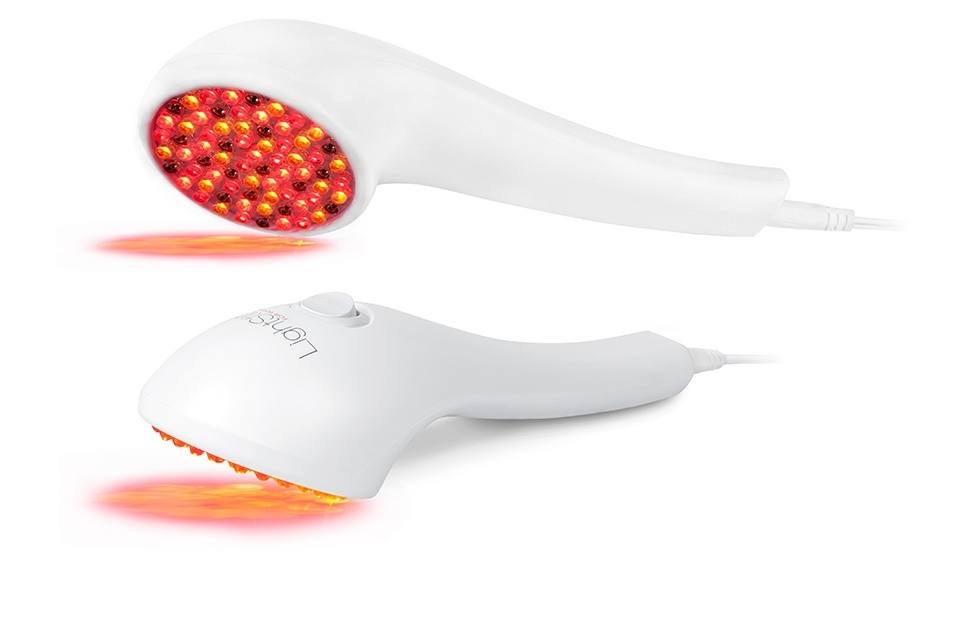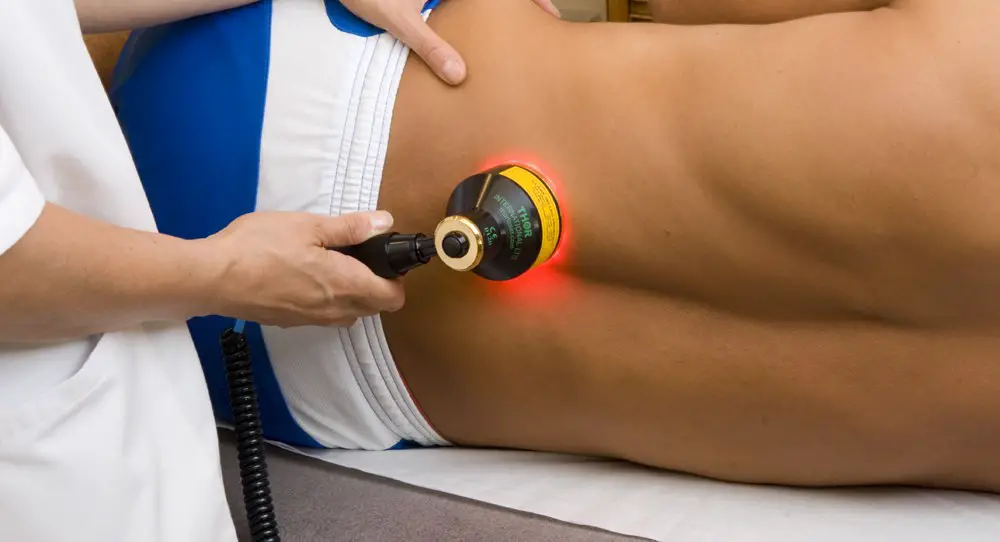Red Light Therapy for Arthritis and Joint Pain
Arthritis is the leading cause of disability worldwide. Usually associated with the elderly, arthritis is, in fact, a disability affecting different ages and genders. Red Light Therapy for Arthritis and Joint pain is now recommended.
There are 2 main types of arthritis, which include Osteoarthritis and Rheumatoid arthritis. The main difference in the types of arthritis, is how it develops. Most forms of arthritis lead to similar symptoms; Mainly Painful, swollen and stiff joints, eventually reducing a person’s overall mobility.

Light Therapy is used as an effective treatment for Arthritis, Joint mobility and pain reduction. Treatment of Red and near infrared light has actually been used for arthritis since the late 1980’s. By the year 2000, enough scientific evidence existed to recommend it for all arthritis patients regardless of cause or severity.
How does Light Therapy work for Arthritis and Joint pain?
Light Therapy or LLLT as it’s commonly known, works by targeting the cellular origins of arthritis. The cells absorb the wavelengths in the red and near infrared range (600-1000nm), and convert that light energy into biochemical energy in the form of nitric oxide, through a process known as Photobiomodulation. This enables the cellular functions to work at a higher capacity, in-turn fastening the healing process. Researchers have proven that red and near infrared light increases energy production, or boosts the production of ATP.
After a short period of exposure to the specific wavelengths, blood flow is increased to nerves and other tissues. This boost in circulation is one of the reasons for pain relief from Osteoarthritis and Rheumatoid arthritis.Clinical studies show that light therapy can reduce pain on all parts of the body including knees, fingers, wrists, hands, elbows, back, shoulders, legs and the jaw.
Red and near infrared light reduces local stress, which helps your cells to function optimally again.
Light Therapy Treatment
Treatment of Osteoarthritis typically entails direct exposure of the affected area to light, while rheumatoid treatment involves either directing light to the inflamed joints or to the blood in the affected area.
Rheumatoid arthritis is an autoimmune disease. This means that while the joints are inflamed, this is just a symptom. The actual root cause is the immune cells, thus the need to expose these blood cells to light. Studies have also shown that red and near infrared light is effective in treating other autoimmune diseases, such as hypothyroidism.
Due to their small size, fingers, hands, wrists and toes are the easiest to treat and often require small doses of red light to eliminate pain.
Knees are the most commonly affected joints. People suffering from knee arthritis are more prone to disability but studies show that light therapy can effectively eliminate pain and heal inflamed knee joints entirely.
Treatment time ranges between 5 to 30 minutes depending on the severity of your pain, and the size of the area.
Red or Infrared?
Both Red light at 660nm and near infrared light at 850nm have been proven to enhance cellular function.
The difference between red (600-700nm) and infrared (700-1000nm) light is the depth to which they penetrate. Wavelengths higher than 740nm penetrate better than wavelengths under 740nm on larger joints. The 740-850nm range is the optimal range for penetration and around 820nm for maximum effects on the cell. Near infrared light is invisible to the human eye, it penetrates into deeper tissue, so the infrared devices used for arthritis treatment actually heat the tissues below the skin, to produce a specific and localized increase of circulation. This is one reason for rapid relief of chronic pain. It then leads to reduced joint pain and increased muscle recovery.
Red light wavelengths working at a shallower level in the dermis, and are effective in reducing inflammation that causes pain associated with arthritis..
A low power red light may be appropriate for arthritis of the hands and feet, but will probably be inadequate for arthritis of larger joints such as the knee or shoulder.
The majority of light therapy studies on arthritis use infrared wavelengths for this reason.
The studies comparing red and infrared wavelengths show better results from the infrared in regards to the joints.
Research and Clinical Studies
There have been several hundred quality clinical studies for the treatment of Red and near infrared light therapy on arthritis and the parameters for all joints. Below are a four examples that have beneficial information;
A 1992 study, published by PubMed.gov.
Objective: To evaluate the effects of low-power light therapy on pain and disability in elderly patients with degenerative osteoarthritis of the knee.
Conclusion of this study: Low-power light therapy is effective in relieving pain and disability in degenerative osteoarthritis of the knee.
Dr. MR Hamblin, 29 Oct. 2013; Can osteoarthritis be treated with light? – NCBI – NIH
Article information: Low level light therapy (LLLT) is a rapidly growing alternative approach to many medical conditions that require relief from pain and inflammation, stimulation of healing, and prevention of tissue death after injury or infarction.
In a 2017 study, published by PubMed.gov.
Objective: To examine the analgesic and biochemical effect of LLLT in patients with knee osteoarthritis
Conclusion of this study: Results showed that low-level laser therapy was efficient in reducing pain and improving cartilage thickness through biochemical changes.
In a Nov. 2010 study, available online,
Objective: The objective of this study was to evaluate whether light -emitting diodes (LEDs) could be effective in a noninvasive, therapeutic device for the treatment of osteoarthritic (OA) knee joints.
Conclusion of this study: There was a general preservation of the articular surface and decreased levels of inflammation in the osteoarthritic joints with the application of LED therapy. This may provide potential application as a noninvasive treatment.
Home Light Therapy Devices
Light therapy devices with red and infrared wavelengths are capable of handling all neuropathy conditions, including knee and back pain, fibromyalgia, and all symptoms occurring due to arthritis . LED technologies for treating arthritis at home, are not only effective, they are also affordable. The light wavelength of these products will penetrate effectively to relieve inflammation, aching joints, sores, muscle spasms, and stiffness associated with arthritic conditions.
Things to consider when choosing your Light Therapy Device
There are many important factors to consider when choosing a light therapy device for arthritis;
Is it capable of providing relief against arthritis pains within a short period of time?
As the pain is due to inflammation and swelling of the joints, the device must first reduce swelling.
Penetrating power is important when choosing your device. Make sure you consider the wavelength and strength of the product.
The treatment area and size are important to consider when choosing a device.
For smaller areas, choose an red and infrared hand held device.
The best option for larger area’s is a 2 panel LED red and infrared device.
The best home devices offer a combination of red an infrared wavelengths. The dualistic treatment approach uses both different properties of each light band to stimulate a different natural response from the body.
Top 3 Light Therapy Devices for Arthritis
Tendlite
The Tendlite is one of the best home light therapy devices for effective arthritis pain treatment. It heals more than 60% faster on joint tissue repairs. 60 seconds per treatment session on shoulder, knee, ankle, fingers or any other joint, for a safe, painless treatment.
It comes with a 60 day money back guarantee. Cord free, this device is convenient and portable.
The Tendlite is suited for smaller joints such as the fingers. This product will fall short for larger joints, as the treatment time will be longer than other stronger, larger home light therapy products.

LightStim
The LightStim is a great LED device specifically designed and manufactured to address pain relief and management due to rheumatoid and osteoarthritis. It is a corded hand-held device, consisting of 72 LED’s (36 Red and 36 infrared). As this device uses both red and infrared it is suitable for treating shallower tissues, joints and tendons as well as reaching deeper into the tissue and joints. The LightStim offers 4 different light frequencies to alleviate chronic pain.
The best device for larger area’s such as the shoulders.

Revive DPL II Light Therapy Panel
The DPL II emit FIR rays through dozens of small LED bulbs on 2 separate panels. You can use it as a table top device, or you can separate the 2 panels and wrap them around your knee, elbow, hand or foot. The DPL has an advantage as it can treat both small and large areas due to it’s size and build. The DPL combines both red (660nm) and infrared light (880nm).

All of these light therapy devices can assist with:
Relieving arthritic pain
Relaxing muscles
Increasing oxygenation in the tissues
Reducing inflammation
Release toxins trapped in cells
Speeds tissue and wound healing
Speeds up recovery
Conclusion
Overwhelming Clinical Evidence Supports Light Therapy as an Effective treatment for Arthritis and Joint Pain. There is strong evidence supporting the use of light therapy at Red and near infrared wavelengths for reducing symptoms of arthritis and improving overall joint health. The light studies look at all types of arthritis; osteoarthritis, rheumatoid, psoriatic, juvenile, canine and more.
Red and Infrared Light Therapy works by improving energy production in joint cells, which helps to lower inflammation and normalize functions.
Light Therapy is an effective treatment for pain, inflammation, swelling, joint mobility and alleviate the discomfort for the millions of people who suffer from these debilitating side effects of arthritis.

